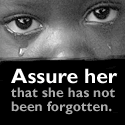
Very rarely in the creative world is there a work that will stand the test of time that brings forth important information on potentially difficult topics in an interesting, artistic and entertaining way. ‘The Immortal Life of Henrietta Lacks
Here is the synopsis of this remarkable book:
‘The Immortal Life of Henrietta Lacks ’ tells the rich, enthralling story of Henrietta Lack, the forgotten woman behind one of the most important tools in modern medicine, and of Lack’s descendants, many of whom feel betrayed by the scientific establishment.
’ tells the rich, enthralling story of Henrietta Lack, the forgotten woman behind one of the most important tools in modern medicine, and of Lack’s descendants, many of whom feel betrayed by the scientific establishment.
Her name was Henrietta Lacks, but scientists know her as HeLa. She was a poor Southern tobacco farmer who worked the same land as her slave ancestors, yet her cells – taken without her knowledge – became one of the most important tools in medicine. The first “immortal” human cells grown in culture, they are still alive today, thought she has been dead for more than sixty years. If you could pile up all HeLa cells ever grown onto a scale, they’d weigh more than 50 million metric tons – as much as a hundred Empire States Buildings. HeLa cells were vital for developing the polio vaccine; uncovered secrets of cancer, viruses, and the atom bomb’s effects; helped lead to important advances like in vitro fertilization, cloning, and gene mapping; and have been bought and sold by the billions.
Yet Henrietta Lacks remains virtually unknown, buried in an unmarked grave.
Now Rebecca Skloot takes us on an extraordinary journey, from the “colored” ward of Johns Hopkins Hospital in the 1950s to stark white laboratories with freezers full of HeLa cells, from Henrietta’s small, dying hometown of Clover, Virginia – a land of wooden slave quarters, faith healings, and voodoo – to East Baltimore today, where her children and grandchildren live and struggle with the legacy of her cells.
Henrietta’s family did not learn of her “immortality” until more than twenty years after her death, when scientists investigating HeLa began using her husband and children in research without informed consent. And though the cells had launched a billion-dollar industry that sells human biological materials, her family never saw any of the profits. As Rebecca Skloot so brilliantly shows, the story of the Lacks family – past and present – is inextricably connected to the dark history of experimentation on African Americans, the birth of bioethics, and the legal battles over whether we control the stuff we are made of.
Over the decade it took to uncover this story, Rebecca Skloot became enmeshed in the lives of the Lacks family – especially Henrietta’s daughter, Deborah, who was devastated to learn about her mother’s cells. Deborah was consumed with questions: Had scientists cloned her mother? Had they killed her to harvest her cells? And if her mother was so important, why couldn’t her children afford health insurance?
Intimate in feeling, astonishing in scope, and impossible to put down, The Immortal Life of Henrietta Lacks captures the beauty and drama of scientific discovery, as well as its human consequences.
Here is the biography of this author:
Rebecca Skloot is a science writer whose articles have appeared in The New York Times Magazine; O, The Oprah Magazine; Discover; Prevention; Glamour; and others. She has worked as a correspondent for NPR’s Radio Lab and PBS’s NOVA scienceNOW, and is a contributing editor at Popular Science magazine. A former vice president of the National Book Critics Circle, she is on the faculty at the University of Memphis, where she teaches creative nonfiction, and she blogs at Culture Dish, hosted by Seed Magazine’s science blogs. Skloot has an undergraduate degree in biomedical science from Colorado State University and an MFA in nonfiction from the University of Pittsburgh. She lives in Memphis, Tennessee. This is her first book.
Rebecca has established a scholarship fund for the descendents of Henrietta Lacks. Donations can be made at www.HenriettaLacksFoundation.org.
And here is a feature story about Henrietta with Rebecca discussing this book:
Admittedly, this book is a little different than the types of books I usually review. But when I heard about this book and read the synopsis, I knew I wanted to read it. It covers many of the topics of interest to me – science, medical research, mistreatment of minorities, etc…
By way of introduction, Rebecca explains how Henrietta Lacks’s cells have been used over the years:
Her cells were part of research into the genes that cause cancer and those that suppress it; they helped develop drugs for treating herpes, leukemia, influenza, hemophilia, and Parkinson’s disease; and they’ve been used to study lactose digestion, sexually transmitted diseases, appendicitis, human longevity, mosquito mating, and the negative cellular effects of working in sewers. Their chromosome and proteins have been studied with such details that scientists know their every quirk. Like guinea pigs and mice, Henrietta’s cells have become the standard laboratory workhorse. (p. 4)
Rebecca explains that she and Deborah, Henrietta’s daughter, couldn’t be more different:
Deborah and I came from very different cultures: I grew up white and agnostic in the Pacific Northwest, my roots half New York Jew and half Midwestern Protestant; Deborah was a deeply religious black Christian from the South. I tended to leave the room when religion came up in conversation because it made me uncomfortable; Deborah’s family tended toward preaching, faith healings, and sometimes voodoo. She grew up in a black neighborhood that was one of the poorest and most dangerous in the country; I grew up in a safe, quiet middle-class neighborhood in a predominantly white city and went to high school with a total of two black students. I was a science journalist who referred to all things supernatural as “woo-woo stuff”; Deborah believed Henrietta’s spirit lived on in her cells, controlling the lives of anyone who crossed its path. Including me. (p. 7)
At the time that Henrietta was being treated for cervical cancer, the tissue samples were taken from her. Not only was that shocking, but so also was the method of treatment – the insertion of the radium tube seems quite primitive (fair warning…):
With Henrietta unconscious on the operating table in the center of the room, her feet in stirrups, the surgeon on duty, Dr. Lawrence Wharton, Jr. sat on a stool between her legs. He peered inside Henrietta, dilated her cervix, and prepared to treat the tumor. But first – though no one had told Henrietta that TeLinde was collecting samples or asked if she wanted to be a donor – Wharton picked up a sharp knife and shaved two dime-sized pieces of tissue from Henrietta’s cervix; one from her tumor, and one from the healthy cervical tissue nearby. Then he placed the samples in a glass dish.
Wharton slipped a tube filled with radium inside Henrietta’s cervix, and sewed it in place. He sewed a plaque filled with radium to the outer surface of her cervix and packed another plaque against it. He slid several rolls of gauze inside her vagina to help keep the radium in place, then threaded a catheter into her bladder so she could urinate without disturbing the treatment. (p. 33)
The tissue was passed along to Dr. George Gey, head of tissue culture research at Johns Hopkins, where they grew amazingly quickly:
But Henrietta’s cells weren’t just surviving, they were growing with mythological intensity. By the next morning, they’d doubled. Mary [Dr. Gey’s wife] divided the contents of each tube into two, giving them room to grow, and within twenty-four hours, they’d doubled again. Soon she was dividing them into four tubes, then six. Henrietta’s cells grew to fill as much space as Mary [Dr. Gey’s assistant] gave them. (p. 40)
Dr. Gey distributed the cells worldwide:
He sent shipments of HeLa cells to researchers in Texas, India, New York, Amsterdam, and many places between. Those researchers gave them to more researchers, who gave them to still more. Henrietta’s cells rode into the mountains of Chile in the saddlebags of pack mules. As Gey flew from one lab to another, demonstrating his cultural techniques and helping to set up new laboratories, he always flew with tubes of Henrietta’s cells in his breast pocket. And when scientists visited Gey’s lab to learn his techniques, he usually sent them home with a vial or two of HeLa. In letters, Gey and some of his colleagues began referring to the cells as “his precious babies.”
The reasons Henrietta’s cells were so precious was because they allowed scientists to perform experiments that would have been impossible with a living human. They cut HeLa cells apart and exposed them to endless toxins, radiation, and infections. They bombarded them with drugs, hoping to find one that would kill malignant cell without destroying normal ones. They studied immune suppression and cancer growth by injecting HeLa cells into immune-compromised rats, which developed malignant tumors much like Henrietta’s. If the cells died in the process, it didn’t matter – scientists could just go back to their eternally growing HeLa stock and start over again. (pp. 57-58)
Henrietta was very aware that her cancer was spreading:
In early June, Henrietta told her doctors several times that she thought the cancer was spreading, that she could feel it moving through her, but they found nothing wrong with her. “The patient states that she feels fairly well,” one doctor wrote in her chart, “however she continues to complain of some vague lower abdominal discomfort…No evidence of recurrence. Return in one month.”
There’s no indication that Henrietta questioned him; like most patients in the 1950s, she deferred to anything her doctors said. This was a time when “benevolent deception” was a common practice – doctors often withheld even the most fundamental information from their patients, sometimes not giving them any diagnosis at all. They believed it was best not to confuse or upset patients with frightening terms they might not understand, like cancer. Doctors knew best, and most patients didn’t question that. (p. 63)
On a personal note, my mother had told me that her father, who died of lung cancer in the 1950s, was never told that he had the disease. Being the skeptic that I can be, I have a hard time accepting the idea that people don’t question their doctors, even in the present day.
I was appalled at some of the medical practices that Rebecca included in her book. This example is in a chapter entitled ‘Illegal, Immoral, and Deplorable’ – aptly titled:
As HeLa grew like crabgrass in laboratories around the world, a virologist named Chester Southam had a frightening thought: What if Henrietta’s cancer cells could infect the scientists working on them? Gey and several others had already shown that some rats grew tumors with live HeLa. Why not humans?
Southam was a well-respected cancer researcher and chief of virology at Sloan-Kettering Institute for Cancer Research. He and many other scientists believed that cancer was caused by either a virus or an immune system deficiency, so Southam decided to use HeLa to test those theories.
In February, 1954, Southam loaded a syringe with saline solution mixed with HeLa. He slid the needle into the forearm of a woman who’d recently been hospitalized for leukemia, then pushed the plunger, injecting about five million of Henrietta’s cells into her arm. Using a second needle, Southam tattooed a tiny speck of India ink next to the small bump that formed at the HeLa injection site. That way, he’d know where to look when he reexamined the woman days, weeks, and months later, to see if Henrietta’s cancer was growing on her arm. He repeated the process with about a dozen other cancer patients. He told them he was testing their immune systems; he said nothing about injecting them with someone else’s malignant cells.
Within hours, the patient’s forearms grew red and swollen. Five to ten days later, hard nodules began growing at the injection sites. Southam removed some of the nodules to verify that they were cancerous, but he left several to see if the patient’s immune system would reject them or the cancer would spread. Within two weeks, some of the nodules had grown to two centimeters – about the size of Henrietta’s tumor when she went in for her radium treatments.
Southam eventually removed most of the HeLa tumors, and those he didn’t remove vanished on their own in a few months. But in four patients, the nodules grew back. He removed them, but they returned again and again. In one patient, Henrietta’s cancer cells metastasized to her lymph nodes. (p. 128)
Southam went on to solicit volunteers in the Ohio State Penitentiary in order to inject healthy patients. His tactics reminded me of those of Dr. Josef Mengele, the notorious ‘Angel of Death’ in Nazi Germany, who conducted unspeakable experiments on concentration camp prisoners.
Many organizations profited from the HeLa cells:
There’s no record of [Johns] Hopkins or Gey accepting money for HeLa cells, but many for-profit cell banks and biotech companies have. Microbiological Associates- which later became part of Invitrogen and Bio Whittaker, two of the largest biotech companies in the world – got its start selling HeLa. Since Microbiological Associates was privately owned and sold many other biological products, there’s no way to know how much of its revenue came specifically from HeLa. The same is true for many other companies. What we do know is that today, Invitrogen sells products that cost anywhere from $100 to nearly $10,000 per vial. A search in the U.S. Patent and Trademark Office databases turns up more than seventeen thousand patents involving HeLa cells. And there’s no way to quantify the professional gain many scientists have achieved with the help of HeLa. (p. 194)
Although no one is sure why Henrietta’s cells are ‘immortal,’ Ms. Skloot explains how they are:
By the early nineties, a scientist at Yale had used HeLa to discover that human cancer cells contain an enzyme called telomerase that rebuilds their telomeres. The presence of telomerase means cells could keep regenerating their telomeres indefinitely. This explains the mechanisms of HeLa’s immortality: telomerase constantly rewound the ticking clock at the end of Henrietta’s chromosomes so they never grew old and never died. It was this immortality, and the strength with which Henrietta’s cells grew, that made it possible for HeLa to take over so many other cultures – they simply outlived any other cells they encountered. (p. 217)
Henrietta’s nephew, Gary, shared with Rebecca his beliefs about how he thought God used Henrietta, and Rebecca’s interpretation of same:
….”Those cells are Henrietta,” he said, taking back the Bible and opening it to the Books of Romans. “Read this,” he said, pointing to a chunk of text. I started reading to myself and he covered the Bible with his hand. “Out loud,” he said.
So I read aloud from the Bible, for the first time in my life: “Those who believe in me will live, even though they die; and those who live and believe in me will never die”…
“Henrietta was chosen,” Gary whispered. “And when the Lord chooses an angel to do his work, you never know what they going to come back looking like.”
Gary pointed at another passage and told me to keep reading. “There are heavenly bodies and earthly bodies, the beauty that belongs to heavenly bodies is different from the beauty that belongs to earthly bodies”…
I kept reading: “This is how it will be when the dead are raised to life. When the body is buried, it is mortal; when raised, it will be immortal. There is, of course, a physical body, so there has to be a spiritual body.”
“HeLa?” I asked Gary. “You’re saying HeLa is her spiritual body?”
Gary smiled and nodded.
In that moment, reading those passages, I understood completely how some of the Lackses could believe, without doubt, that Henrietta had been chosen by the Lord to become an immortal being. If you believe the Bible is the literal truth, the immortality of Henrietta’s cells makes perfect sense. Of course they were growing and surviving decades after her death, of course they floated through the air, and of course they’d lead to cures for diseases and had been launched into space. Angels are like that. The Bible tells us so…
Jesus told his followers, “I give them eternal life, and they shall never die.” Plain, simple, to the point.
“You better be careful,” Gary told me. “Pretty soon you’re gonna find yourself converted.”
“I doubt it,” I told him, and we both laughed.
He slid the Bible from my hands and flipped to another passage, then handed it back, pointing at one sentence: “When do you who are here find it impossible to believe that God raises the dead?”
“You catch my drift?” he said, smiling a mischievous grin.
I nodded, and Gary closed the Bible in my hands. (pp. 295-296)
In the Afterword, Ms. Skloot made a very valuable point regarding the medical industry:
The debate over the commercialization of human biological material always comes back to one fundamental point: like it or not, we live in a market-driven society, and science is part of that market. Baruch Blumberg, the Nobel Prize-winning researcher who used Ted Slavin’s antibodies for hepatitis B research, told me, “Whether you think the commercialization of medical research is good or bad depends on how into capitalism you are.” On the whole, Blumberg said, commercialization is good; how else would we get the drugs and diagnostic tests we need? Still, he sees a downside. “I think it’s fair to say it’s interfered with science,” he said. “It’s changed the spirit.” Now there are patients and proprietary information where there once was free information flow. “Researchers have become entrepreneurs. That’s boomed our economy and created incentives to do research. But it’s also brought problems, like secrecy and arguments over who owns what.” (p. 325)
Ms. Skloot did an incredible job in her research with regards to how the corporate medical industry has treated minorities and ‘the least of these’ over the years, as well as many other interesting topics. I thought I was reading about Hitler’s Nazi Germany at some points (another topic of great interest to me). The way the Lacks family was treated is deplorable, in my opinion. I am so grateful for what Ms. Skloot has done on their behalf, and how they are finally being made whole to the extent that they can be sixty years after their mother’s death. I am also glad to see that many of her children and their children are finally get to the point of forgiveness – looking at the good that Henrietta’s cells have done for mankind over the last sixty years as opposed to holding on to the idea that they have been robbed. However, I still am incredulous that there are some people and organizations out there that have profited tremendously from the HeLa cell line (you can order a vial of your own online on many different sites).
This is a remarkable book; it completely lived up to my high expectations! It is the type of book I’d like to read again, and I am not normally a more-than-once book reader. It is written at a level that is understandable to the scientists and the non-scientists (that would be me!) in the crowd. The structure was incredible; she had to interweave the medical aspect, the family aspect and ethical/racial aspect, and Rebecca kept the story moving along in a brilliant fashion. With her education background in biomedical science and nonfiction writing, it is as though she was born to be the person to bring Henrietta and her family’s story to the light of day for some many more people. I truly am glad to see its success, and hope to see Ms. Skloot captures some awards for this decade-long labor of love.
There have been several developments since the release of this book in February; it remains on the New York Times Bestseller List. HBO announced that Oprah Winfrey and Alan Ball would develop a film project based on Skloot's book; I am greatly looking forward to that. And on May 29, 2010, there was finally a headstone erected at Henrietta’s gravesite.
You can order this book here .
.
This book was provided by Crown Publishers for review purposes.





























.jpg)







No comments:
Post a Comment